#alternatywy 4 who
Text
love going to the communications office its like entering a fucking time machine, suddenly its 1975 and gierek is still in power
#alternatywy 4 who#riemblings#going anywhere for official paperwork is such lottery youll either land in a normal office or ull end up starring in ur own kafkas Process
0 notes
Text
Tagged by @vostok3-ka let’s goo
1. Three non romantic duos
No one said they don’t have to be obvious, first one is Fedka and Kirillov, THEY ARE JUST IMPORTANT TO ME LIKE-
Perhaps more explenation would be well seen - Fedka is a run away convict, who was sold to the army by Stepan Trofimovic long time ago. Since the beggining of his life, he was dehumanised, because he was born as a serf - he was the property of Verkhovenskys, that is all. And even once he comes back to the city N, he is seen by most as a threat, or as lesser than them (here mostly Pyotr comes to mind), with exception of his family. And then he meets Kirillov - a man, whose whole idea revolves around self sacrifice and belief that once someone learns that they are good, they will be good. And while Fedkas mother was somewhere else, due to family death, Fedka stayed at Kirillovs, drinking tea and talking (also reading Apocalypse). That is to say, he stayed with someone who didn't really see him as a threat, and knew full well he was a murder, and yet treated him with kindness. And what happened? Fedka changed. Well, he still commited the murder, but he did change.
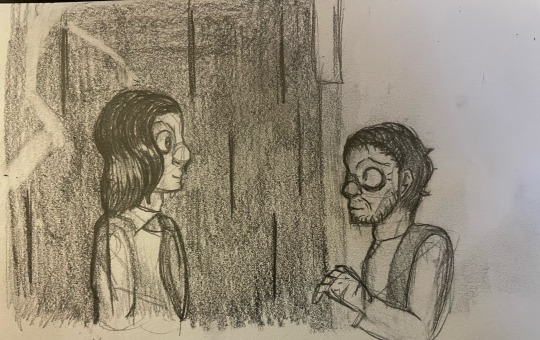
Then we got Cottard and Tarrou from the Plauge…
For those not in the loop, I recently reread the Plauge, and this storyline is similar however not exactly - Cottard is a man who keeps running away from the police, and is lonely. Like has no friends, because no one can relate to his constant fear, and he cannot talk to anyone about his fears because what if someone betrays him and out him to the police. Enter Tarrou - a man who is not a fan of police (due to his past, from what I understood), and who somehow finds out about Cottards constant escape. While Cottard is furious at first, soon he finds out that Tarrou is the only person he can trully talk to. He doesn't judge him, nor can he out him to the police. And they become friends. And at the end of the Plauge, once Tarrou is gone (and the Plauge), Cottard goes insane, because not only he might now be wanted again and no one can relate to him now, but also he lost his friend, the one he trusted the most.

The third is rather a comedic duo, more than a great and deep relationship... but you if I have the Plauge... if I have Demons.. then for the great trinity we have to have 1670 - the duo is Bogdan and Jakub
The reason he is only that they bounce of eachother well - and their subplot about exorcisms was funny. It had to be mentioned though, it was funny.
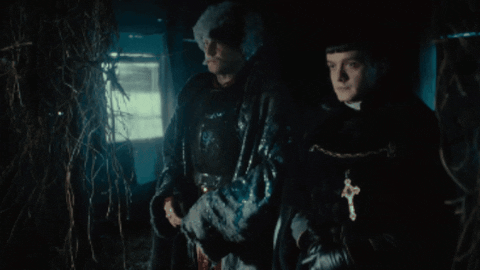
2. A ship that might surprise others:
... I don't think I have one? I'm pretty open about them.
3. Last song:
The age of the understatement by the last shadow puppets
4. Last film:
Niebezpieczni Dżentelmeni 2023 - rewatch for the fourth time
5. Currently reading :
Finishing up "The Text" by Gluhovsky, and then starting Illiad <3
6. Currently watching:
Alternatywy 4
7. Currently consuming:
Air
8. Currently craving:
Break from school
9. Tagged: whoever wants to do it lmao
#dostoevsky demons#alexei nilych kirillov#fedka the convict#la peste#albert camus#cottard#jean tarrou#Their parts are good analisys imo#I may need to write full post just dedicated to them#tag game
7 notes
·
View notes
Text
Colloquial Polish (23/?)
Special thanks to @wednesday-angeline for helping me translating this word!
Colloquial word for osiedle m (pl. osiedla) - housing estate
ośka f
Idziemy dzisiaj na ośkę z ziomkami. Weź browary.
Today we’re going on the housing estate with buddies. Take beers.
ziomek m - buddy, mate
browar m - beer (see more HERE)
Notes:
HISTORY
A term osiedle was previously strongly connected with the Polish People’s Republic (Polish: Polska Rzeczpospolita Ludowa, PRL) (a part of the history of Poland under Communist control between 1952 and 1990 - SOURCE). a typical Polish osiedle those days is a complex of large blocks of flats (they were supposed to last max 20 years because of the shitty construction but they still exist as a reminder of Communist era in some European countries like Czech, Slovakia, Ukraine, Russia etc.). Here are examples:

Osiedle Gaj, Wrocław (SOURCE)

Osiedle Kozanów, Wrocław (SOURCE)
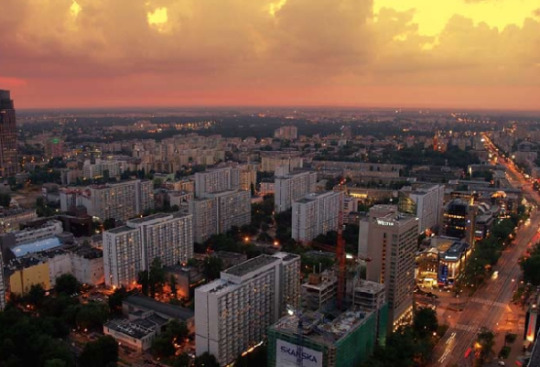
Osiedle Za Żelazną Bramą, Warszawa (SOURCE)
We’ve got also words connected with this kind of a complex of large blocks of flats:
blok (mieszkalny) m - block of flats
blokowisko n - complex of large blocks (colloquial)
wielka płyta f - a colloquial term for a panel building constructed of pre-fabricated, pre-stressed concrete (SOURCE); in Polish you can say wielka płyta refering to blok (mieszkalny)
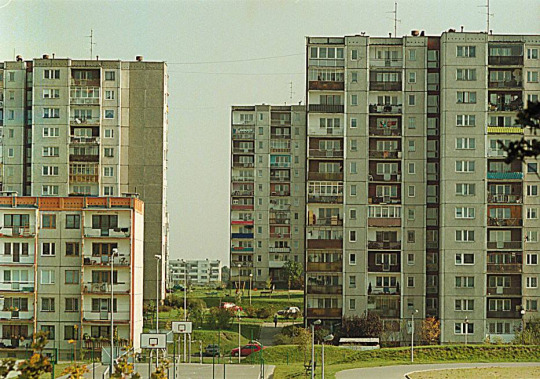
Wielka płyta, Polska (SOURCE)
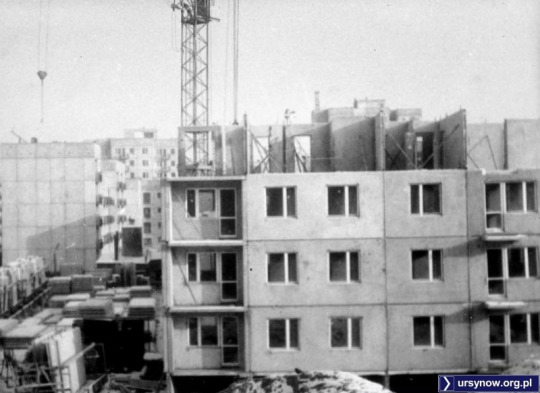
Construction of the building Lachmana Wacława 6, osiedle Ursynów, Warszawa (SOURCE)
If you want to take a closer look at Polish wielka płyta and a communist osiedle Ursynów (Warszawa), I recommend you watch a Polish comedy TV series “Alternatywy 4”.
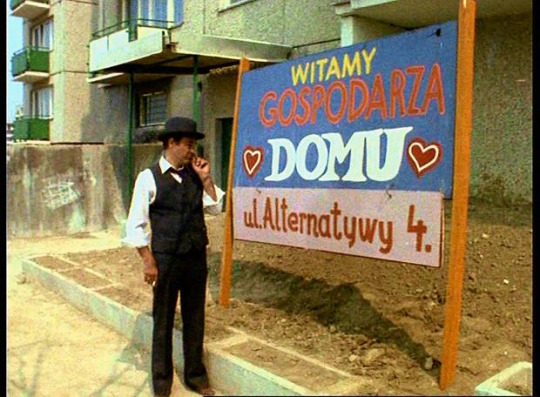
We welcome the householder. Alternatywy 4 Street

It’s a satire of life under the communist rule. Completed in 1983 (but aired in 1986 due to the censorship) “Alternatywy 4” contains 9 episodes directed by Stanisław Bareja. The title “Alternatywy 4” refers to a residential complex, still in existence at 3 Marii Grzegorzewskiej Street in Warsaw, Poland (SOURCE).
Personally it’s one of my favourite Polish tv series. I love the absurdity of those times on the screen (but not irl).
SOCIETY
There are strong stereotypes about occupants of osiedla / blokowiska (pl.). Polish don’t have a good opinion on them. We’ve got:
older people who still remember communist times
people with social problems, social ills
dresy / dresiarze and kibole (pl.)
Let’s start with the first point - older people (50-60 yo). They still remember communist times, usually it’s a patriarchal form of a family, sometimes with a alcoholic problem (mostly men).
So called social ills, in Polish patologia f (colloquial word - patola f) or problemy społeczne (pl.), refers to families/people with social problems like poverty, alcoholism, drug addiction, sometimes home abuse.
Dres m / dresiarz m and kibol m are the most characteristic occupants of osiedle / blokowisko.
DRES m / DRESIARZ m
It’s only an introduction to the dres subculture - it’s much more complicated; the description under is a simplification.

(SOURCE)
“Dres m / dresiarz m - a term used in Poland to describe a specific subculture or class of young males. Dresiarze stereotypically live in urban tower blocks or tenement houses. They are usually portrayed as undereducated, unemployed, aggressive and anti-social. The dresiarz phenomenon was first observed in the 1990s, and is sometimes compared to the British chav, although is perhaps more similar to the Russian Gopnik. It would later partially merge with the hooligan subcultures, and sometimes attributed to football hooligans.
The term refers to tracksuits, which in Polish is dres. Kark (pl. Polish: karki - napes) and blocker (pl. Polish: blokersi - block-people) are related but not synonymous terms. The term has a pejorative connotation in Polish mass-media.
Kark, meaning “neck” and a short for byczy kark (“bull neck”), is most used in connection with weight lifting; a person perceived as a kark may be wearing neither trainers nor a tracksuit, but shares most other elements of stereotypical dres behaviour. The term may also refer to lower-ranked members of gangster groups, i.e. “Thugs”.
Blokers - a term for a young person exhibiting anti-social behaviour, living in towerblocks (blok in Polish).
ABS - an acronym for Absolutny Brak Szyi (“Total Lack of Neck”). Often used pejoratively for heavily “pumped up” thugs and hooligans.” (SOURCE)
KIBOL m
It’s only an introduction to the kibol subculture - it’s much more complicated; the description under is a simplification.

Śląsk Wrocław (SOURCE)

Lech Poznań (Kolejorz) (SOURCE)

Legia Warszawa (SOURCE)
This term refers to a fanatic football supporter in Poland. They often reminds dresy / dresiarze - clothes, behaviour, interests. They usually wear clothes related to their favourite football team. Every football club has its own aggresive supporters known as kibole (pl.). They especially hate:
the police (their typical slogan is “jebać policję” - fuck the police; or “zawsze i wszędzie policja jebana będzie” - the police will be fucked everytime and everywhere)
supporters of enemy football teams (they have special songs like “Stara kurwa do jebania - Lech z Poznania!” - Lech from Poznań is an old whore to fuck!; a song of WKS Śląsk Wrocław for Lech Poznań)
homosexuals (if you look like a “faggot” to them, you can get kicked on the ass quickly)
imigrants (right now kibole are more against imigrants than ever what causes fights, even murders of both sides - kibole and imigrants)
They are a dangerous group during games, so it’s better not to piss them off… It is said that the most fanatic and dangerous kibole are in the smallest towns (years ago I’ve read an article about arbiters in small towns of Poland and it seems like they literally fight for their lifes after the game sometimes).
It’s not like you can’t watch a game of your favourite football team while not being a kibol. Kibole are usually “closed” in a special sector where they can’t hurt other supporters. But fights on the stadium happen from time to time. After the game (outside the stadium) fights between supporters of football clubs and the police are “normal” and frequent.
PLEASE REMEMBER THAT THESE ARE ONLY STEREOTYPES. This picture of block of flats society is exaggerated! Occupants of blokowiska vary a lot!
PRESENT
Osiedla / Blokowiska are still built in Poland but they are on the outskirts of cities. They are more expensive than previous blocks of flats (sometimes even worse constructed!) so people are not so willing to live there. Right now a term osiedle can refer to a group of single-family houses. Examples:

Osiedle Malownicze, Wrocław (SOURCE)

Wiślany Mokotów, Warszawa (SOURCE)
POST SCRIPTUM
You can say that block of flats and whole blokowiska are even heroes of people’s lifes. One of the best movies I’ve ever seen is Russian “The Fool” (”Дурак” 2014).
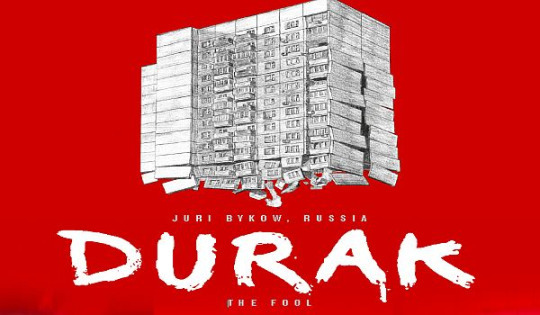
“At stake are the lives of 800 inhabitants of an old dorm that is at risk of collapsing within the span of the night. Dima Nikitin is a simple and honest guy, a foreman of a repair team at a provincial housing service. Nothing really makes him stand out among the rest. It’s only the unusual combination of honesty and integrity that makes others perceive him as somewhat weird.In the little town there is a notorious dorm, inhabited mainly by drunkards and outcasts. One night the pipes burst at the dorm. After arriving at the scene, Nikitin discovers that things are way more serious - the building will not stand through the night. People need to be evacuated immediately. Fighting the red tape, Nikitin sets off on a night Odyssey around the town authorities.” (SOURCE)
youtube
“The Fool” is not strictly about occupants of the block of flats, it’s more directed to the town authorities. Despite this you can clearly see how people live in this kind of building, why social ills are so common there.
Watch it, you won’t regret it.
133 notes
·
View notes